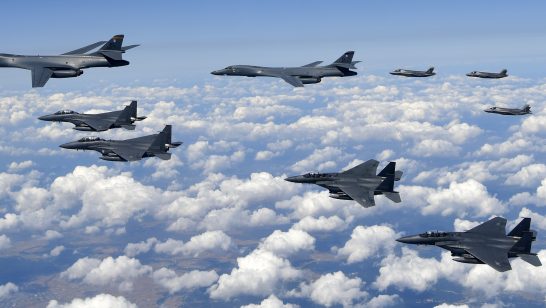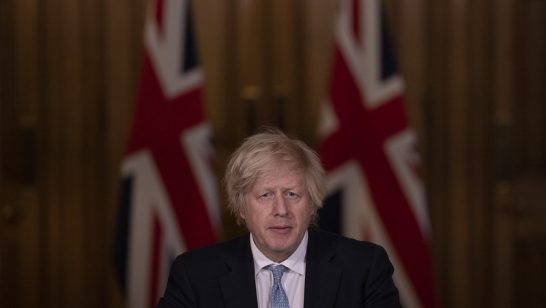
Separated by less than 28 months, NATO’s most recent summits took place in very different strategic environments. In May 2012, NATO leaders at the Chicago Summit mentioned Russia in a few anodyne paragraphs buried in the last half of their declaration. They stressed the positive (“we welcome important progress in our cooperation with Russia over the years”) and cited only two items of “concern”: Russia’s “stated intentions regarding military deployments close to Alliance borders” and its “build-up of…military presence on Georgia’s territory.”
In contrast, at their September 2014 summit in Wales, the Alliance leaders warned, in the second sentence of their final communiqué, that “Russia’s aggressive actions against Ukraine have fundamentally challenged our vision of a Europe whole, free, and at peace.” Ensuing paragraphs detailed the Allies’ grievances (“we condemn in the strongest terms Russia’s escalating and illegal military intervention in Ukraine”) and their “demands” that Russia take concrete action to comply with its international obligations”, “end its illegitimate occupation of Crimea,” and stop its support of pro-Moscow separatists.
Forceful language can be useful. In this case, the Wales declaration probably helped to ensure that the 28 EU member states (of whom 22 are members of NATO) reached a consensus soon thereafter to augment sanctions against Russian firms and individuals. But rhetoric alone will not deter Vladimir Putin’s Russia.
Measures implemented by NATO over the past several months—for example, quadrupling its air police missions in the Baltic states; deploying Airborne Warning and Control System patrols over Poland and Romania; increasing its maritime presence in the Baltic and Mediterranean seas; quickly organizing ground force exercises involving the Baltic states, Poland, and Germany; and holding its largest multinational cyber defense exercise—seem to have had the desired effect of reassuring the Allies most worried about Russia. Moreover, NATO’s higher profile in the region is undoubtedly welcomed by Partner countries Sweden and Finland, whose air and coastal defense forces have scrambled to respond to recent Russian military activities close to — and, in at least one case, perhaps within — their national airspace and territorial waters.
Additional steps taken on a national basis have complemented NATO’s moves. The current rotations of a few hundred U.S. soldiers through Lithuania, Latvia, Estonia, and Poland will continue at least until the end of 2015. A “European Activity Set”—the tanks and other vehicles and equipment needed to outfit an armored brigade – may be moved to Europe for use by U.S. rotational personnel. (The current set is designed to outfit a heavy battalion.) And the U.S. Army Chief of Staff confirmed last month that he has no plans for further cuts to the Army’s force structure permanently based in Europe, which has dropped from about 55,000 to 30,000 soldiers over the past decade. Other Allies, too, are making new efforts. For example, France’s defense minister recently announced that his country will send an “armored unit” to conduct joint exercises in Poland.
Over the longer term, NATO’s Readiness Action Plan should demonstrate that the Alliance is able to respond in timely way and with credible effect to deter and respond to potential contingencies, including the sort of “hybrid warfare” practiced by Russia against Ukraine. In particular, the planned Very High Readiness Joint Task Force (VJTF)—a brigade-size land force with special operations, air, and maritime elements able to be deployed within a few days—should improve NATO’s responsiveness along its periphery, beginning with its eastern borders. The planned enhancements to NATO’s Multinational Corps Northeast headquarters in Szczecin, Poland, should be another step in this direction.
But implementing these further measures will take time. NATO defense ministers are expected to approve the VJTF’s size and design at their meeting next February, and important questions must be tackled. Will the Allies provide the prepositioned assets and improved reception facilities needed by the VJTF? Which countries will contribute to the new force, for how long, and how will those contributions relate to the larger NATO Response force (for which the VJTF is intended to serve as a “spearhead”) or to other “rapid response” formations (such as the EU’s Battle Groups or the French-British Combined Joint Expeditionary Force)? What will be SACEUR’s authority to call short-notice exercises or, perhaps, to deploy elements of the VJTF in the event of an increased threat? And what part of the new force will be subject to NATO common funding?
Behind these questions lurks a wider challenge: reversing the trend of declining defense budgets, using available funds more effectively, and finding a more equitable sharing of costs and responsibilities. The language agreed at Wales—notably, that Allies will “aim to move toward the 2 percent (of GDP) guideline (for defense expenditures) within a decade”—is, of course, far from a guarantee, and NATO’s less-than-brilliant record of performance with similar targets in the past can leave one a bit skeptical.
While a handful of Allies have announced spending increases, the French and German defense ministries seem to be struggling to maintain their current budgets, which now fall far short of the 2 percent target. And a recent report by a respected British think-tank RUSI estimates that U.K. defense spending may well fall below the target—to less than 1.9 percent—as early as next year. As expected, the Wales summit unveiled a new “framework nations concept” intended to facilitate multinational cooperation on capabilities development. But it will take some time to evaluate if, in practice, this initiative will generate more capabilities than NATO’s “smart defense” and “Connected Forces Initiative,” or the EU’s “pooling and sharing” approach.
Still, while NATO Allies may feel reassured, another hard question remains: what did the Alliance agree at Wales to do for Ukraine? In the near-term, at least, NATO’s practical assistance seems modest relative to the situation on the ground: more help to Kiev on military organizational reform, defense education, improving interoperability, and some new programs to improve Ukrainian C3, logistics, and “military career transition.”
On a national basis, the United States has promised $116 million in security assistance–including body armor, vehicles, night and thermal vision devices, engineering equipment, advanced radios, and counter-mortar radars—of which only a portion has been delivered. However, the U.S. administration has declined, so far, Ukrainian requests for lethal weaponry, despite calls to do so by some members of Congress. As one unnamed American official explained in late September: “It’s our assessment that if we were to provide [lethal aid], a likely result would be military escalation and greater Russian involvement. Our concern is that Ukraine faces inescapable military asymmetry with Russia.” To be fair, during a Senate hearing last month considering his nomination to become the Deputy Secretary of State, the President’s Deputy National Security Advisor, Tony Blinken, stated that providing arms to Ukraine “can play a role potentially in deterring (Russia)…I believe that is something we need to look at very carefully.”
In the meantime, Russia appears willing to continue its military, economic, and propaganda support for armed separatists in eastern Ukraine, which some analysts believe is a prelude to a more overt attempt to establish a “land bridge” between Russia and the illegally annexed peninsula of Crimea. At this juncture, the best available deterrent against more interference by Moscow in Ukraine may be the combination of EU and American sanctions, which appear to be having some effect on important sectors of the Russian economy. Unfortunately, in the near term, the sanctions also have served as a pretext for President Putin—who opined, in a recent interview, that “(w)hen a Russian feels he is right, he is invincible”—to employ increasingly strident rhetoric against the transatlantic allies. Hence, Ukraine is likely to take its place among the mis-named “frozen conflicts” like Georgia and Moldova.
A final observation: the understandable focus at Wales on reaffirming the deterrence and collective defense aspects of the Alliance risks overshadowing its other “core tasks”– crisis management and cooperative security. The continuing, complex, and violent conflicts in Afghanistan, Syria, Iraq, and parts of northern Africa (especially Libya and the Sahel) will pose an array of dangers for, and demands upon, the transatlantic allies for years, possibly decades, to come. And simmering tensions—arising from the Israel-Palestinian impasse and Iranian nuclear dossier, to cite only two examples—could reach a boiling point with little advance warning.
But responding to those real and potential dangers are not unrelated to the problem of deterring Russia from potentially dangerous behavior. For if Allies fail to follow through on their commitments to defend their interests and values outside Europe, Russian leaders might rationally conclude that at least some of those Allies would be willing to shrug off their responsibilities within Europe, as well.
“Our Alliance remains an essential source of stability in this unpredictable world,” the Wales declaration reminded us. Left unsaid—but just as true—is that the gap between acknowledging that fact and mobilizing our national and collective resources and political will to project “stability” is still alarmingly wide.
The opinions articulated above represent the views of the author(s), and do not necessarily reflect the position of the European Leadership Network or any of its members. The ELN’s aim is to encourage debates that will help develop Europe’s capacity to address the pressing foreign, defence, and security challenges of our time.



